Last-Minute NYC Holiday Gift Guide 🎁
We’ve created a holiday gift guide with presents for the intrepid New Yorker that should arrive just in time—

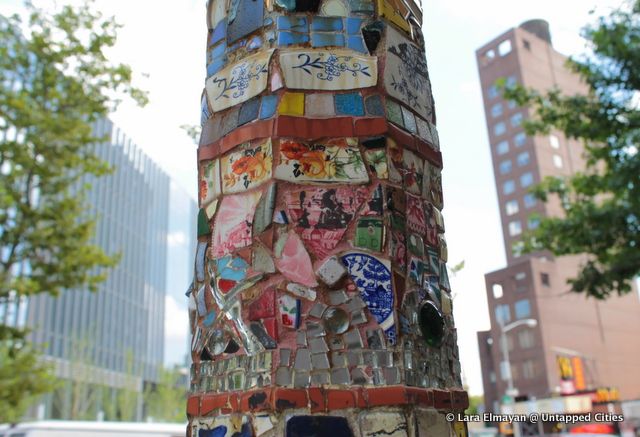
Besides the amazingly diverse population, the community gardens, the graffiti, and the air of resistance, one of the East Village’s claims to New York fame is this: the neighborhood’s lamp posts. In certain areas of the East Village, they’re adorned with tiny mosaic tiles, painted tiles, fragments of dishes and pottery, tiny mirrors, coins, jewel tones, and small sculptures, adding unimaginable color and character to an already colorful neighborhood.
The man behind them, who has become a neighborhood staple and somewhat of a neighborhood legend, is Jim Power,
nicknamed the “Mosaic Man” byThe Village Voice in 1988
. After returning from military service in Vietnam with undiagnosed Post-Traumatic Stress Disorder, working briefly in construction, squatting in an abandoned building, and then becoming, like so many other veterans, completely homeless, Power decorated his first pole with mosaics. That was in the late 80’s. The art hadtherapeutic
value for him, so Power didn’t stop. He claims to have decorated around 60 or 70 poles since then.
St. Marks between 1st and Avenue A
Unfortunately, Power’s art was targeted by Rudy Giuliani’s Anti-Graffiti Task Force, and his lamp posts were taken down. Mayors since Giuliani have been kinder; Michael Bloomberg thanked Power for “beautifying the city with distinctful, artful mosaics” in a 2004 proclamation, and the city eventually gave Power permission to continue his work on public property. But that doesn’t erase the fact that only about a quarter of the lamp posts on the original trail have survived through the years.
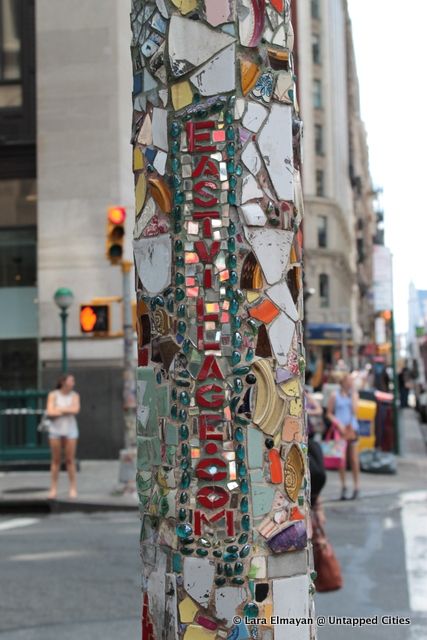
Broadway and 8th Street
Powers is currently at work restoring and maintaining older lamp posts. He
claims that when he works alone, decorating a single lamppost takes one to two months to complete. The work isn’t made any easier by his disability. Luckily, he’s recruited a small team of assistants to help him. The issue of finding funding for the work is a little more challenging; despite a few private commissions and the general appreciation art lovers seem to have for him, his Indiegogo fundraisingcampaign hasn’t quite generated the funding Power would like to comfortably continue making his public art. You can still donate directly on Jim Power’s website.
Most of Power’s works are concentrated on 8th Street, which transitions into St. Mark’s Place. The stretch of the street between Avenue A and Broadway is known as the “Mosaic Trail.” We took a walk east along the trail and photographed every lamp post along it for posterity’s sake. Powers, after all, has learned some cruel lessons from Giuliani and now accepts that his art may be ephemeral–especially if funding isn’t found to maintain and restore it.
Broadway and 8th Street:
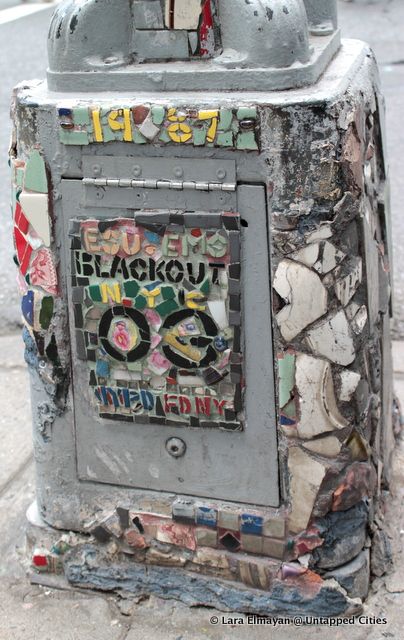
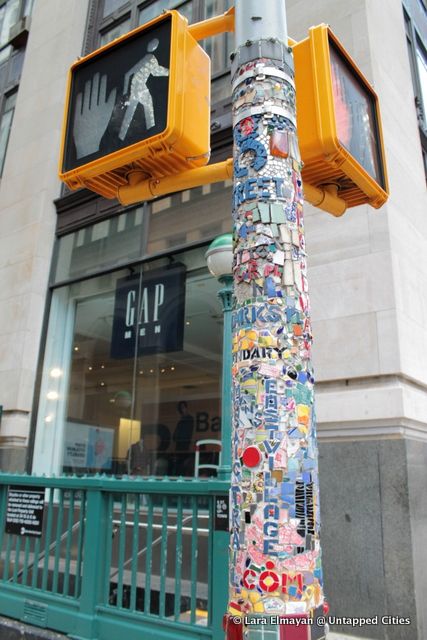
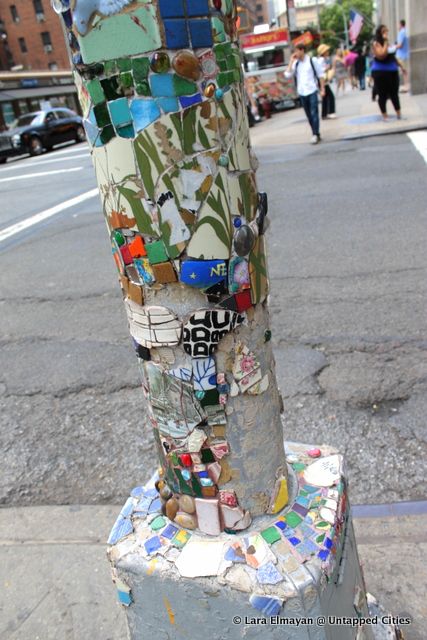
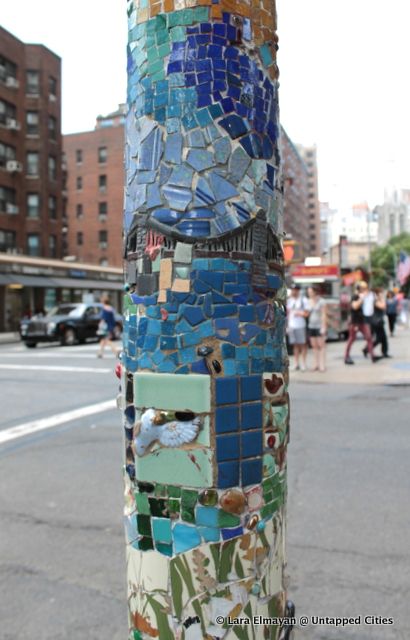
Broadway and 8th Street


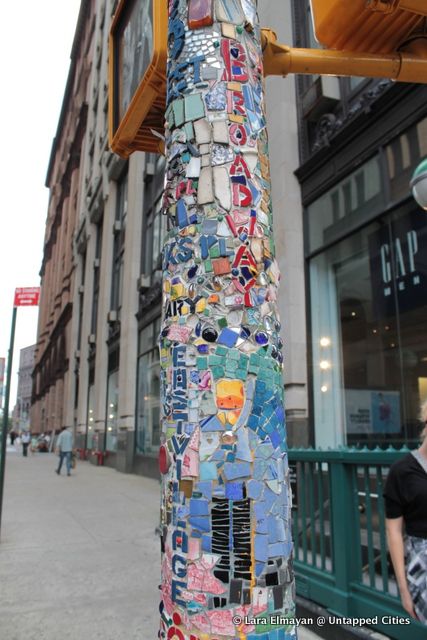
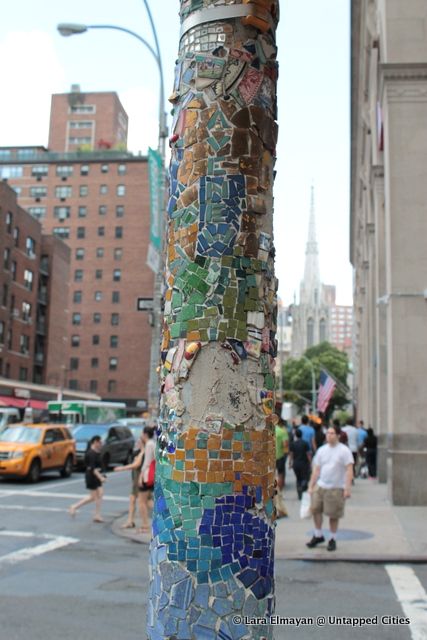
Astor Place and Bowery:

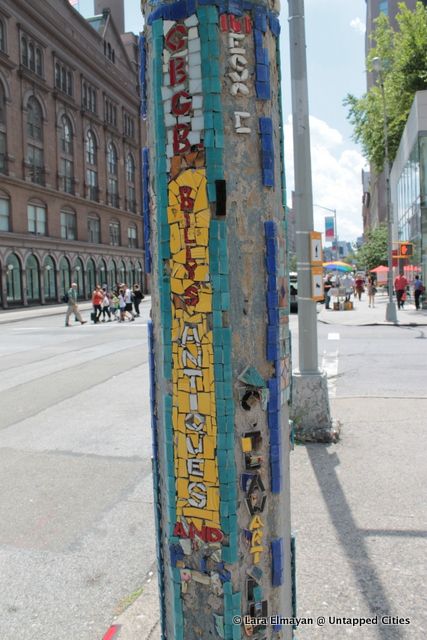
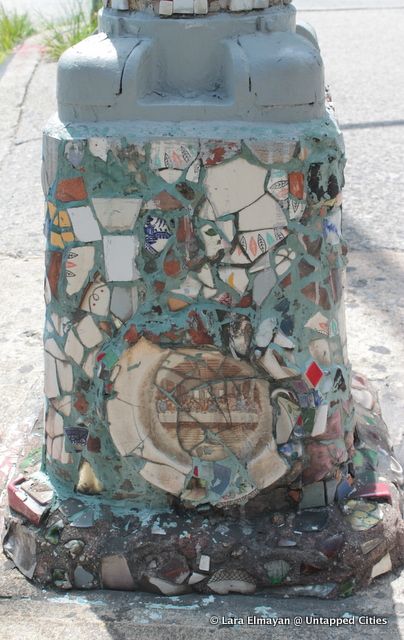
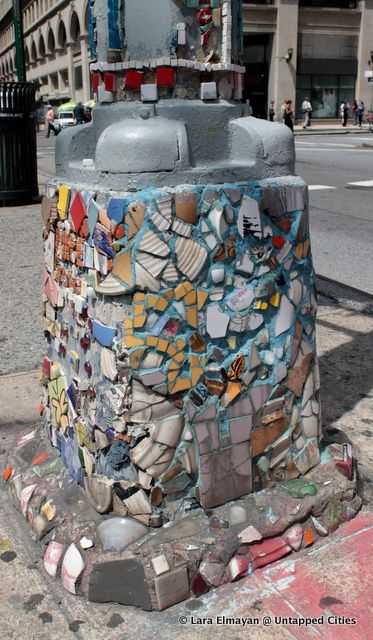
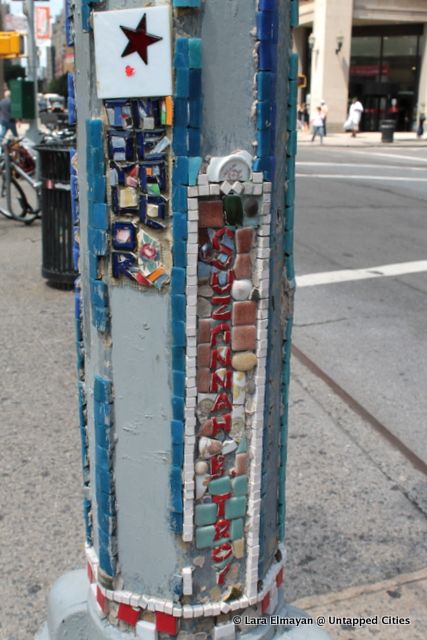
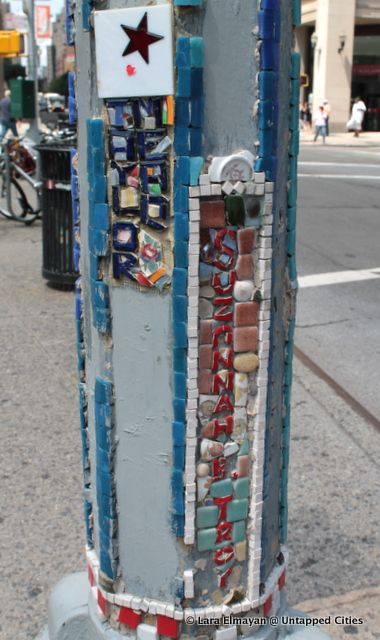



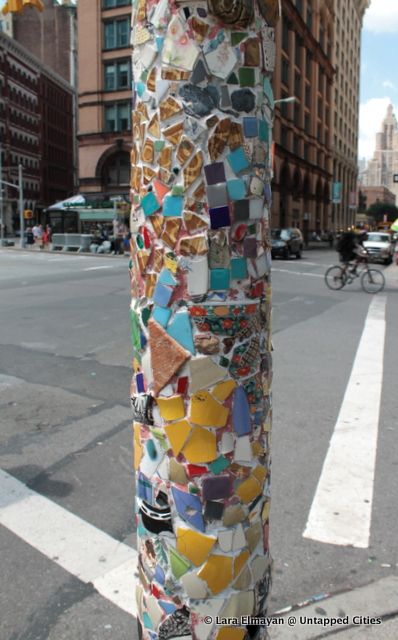

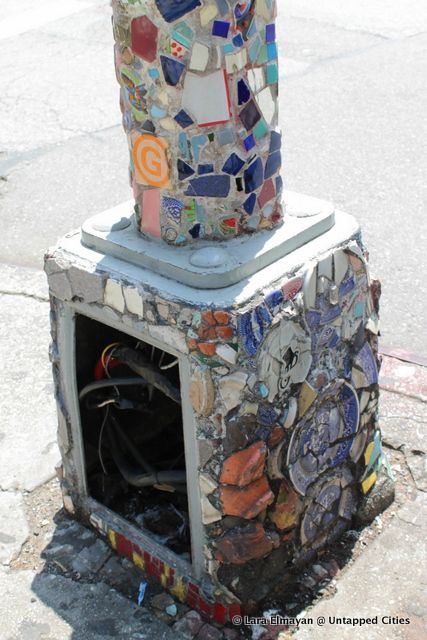
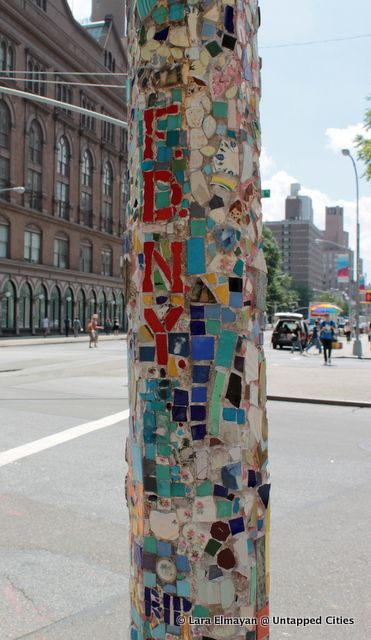

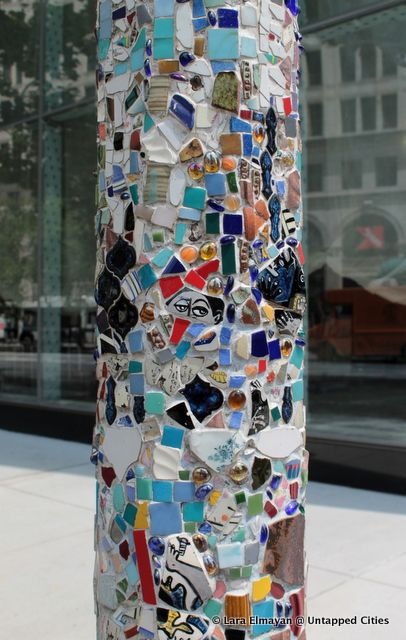
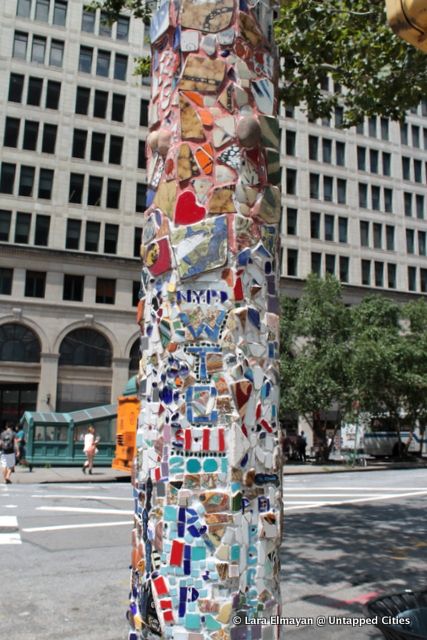


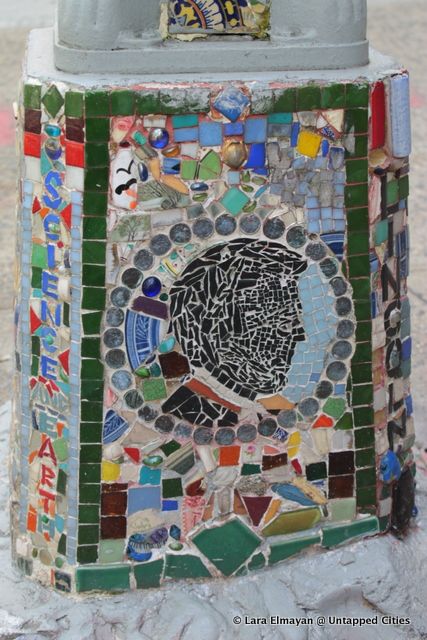
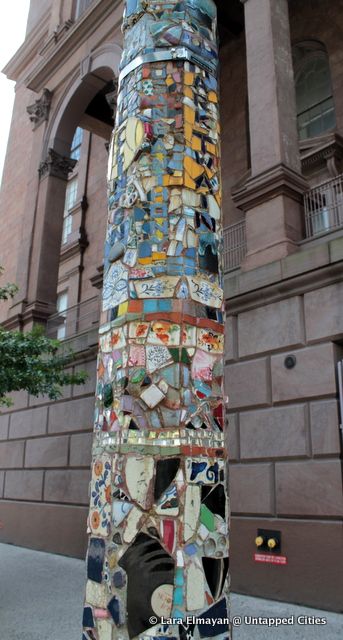
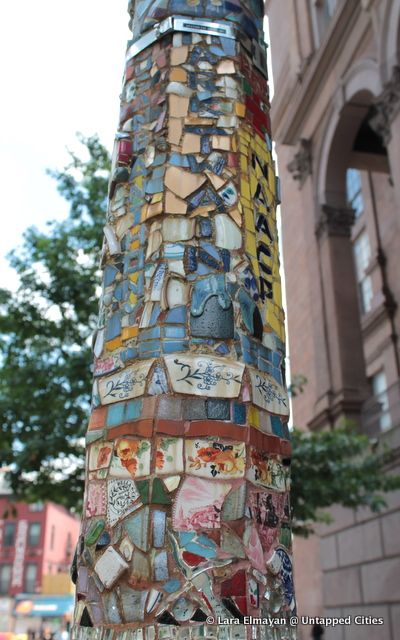
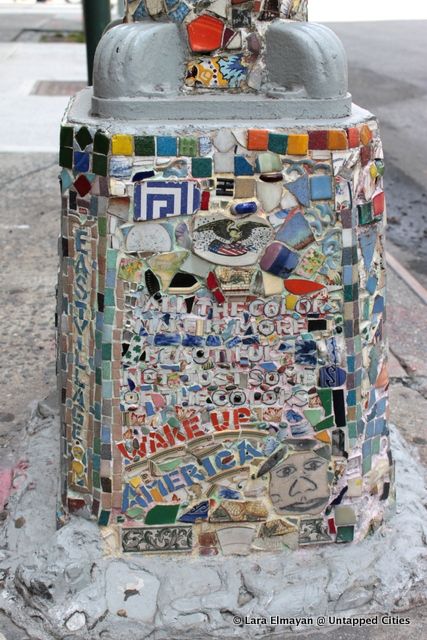
Astor Place and 3rd Avenue
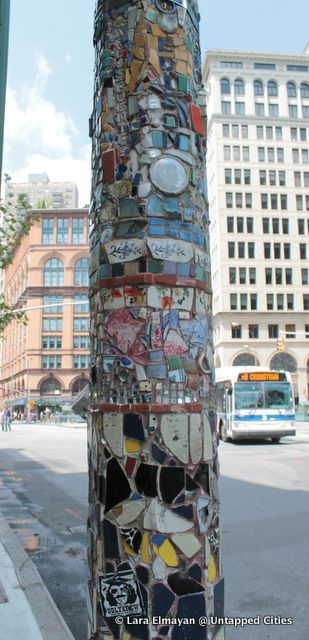

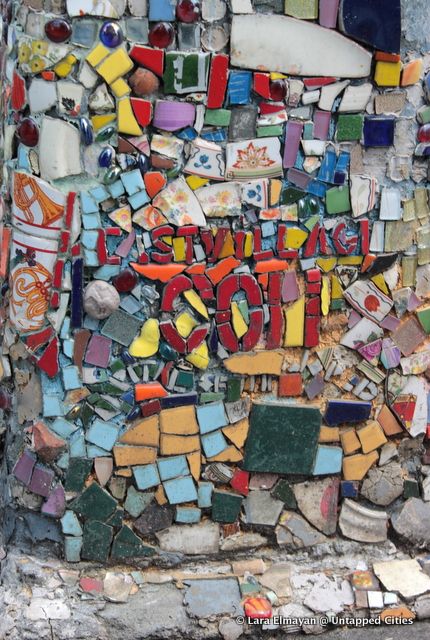
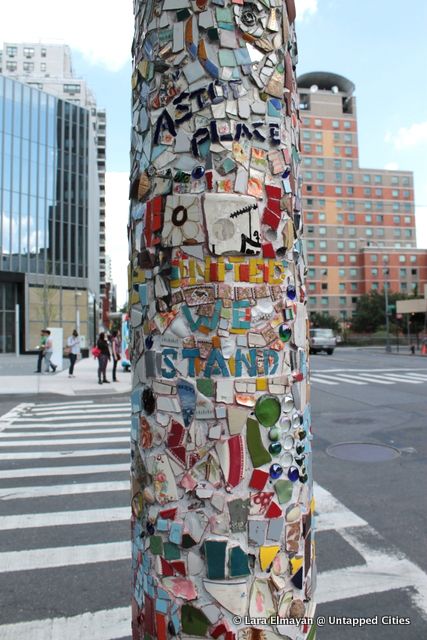
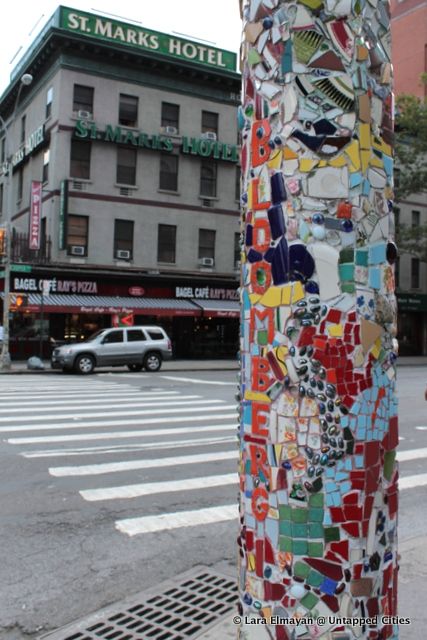


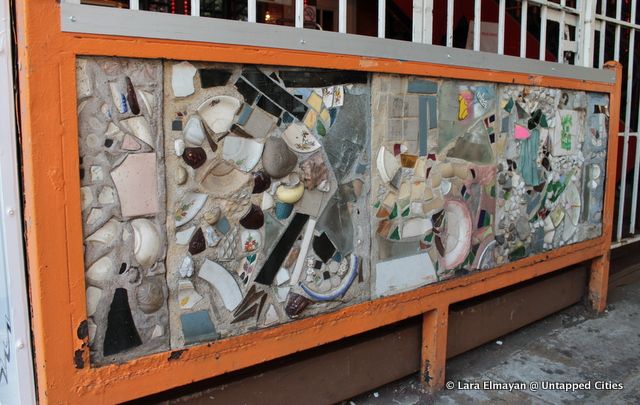
St. Marks and Second Avenue:

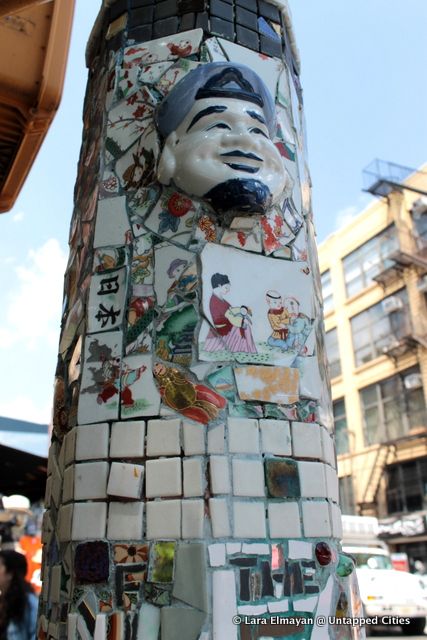
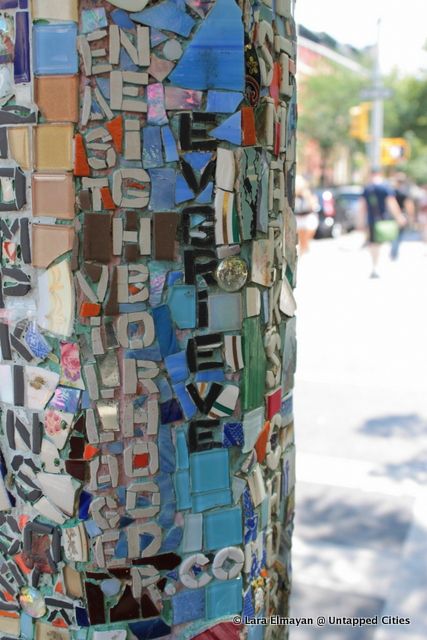
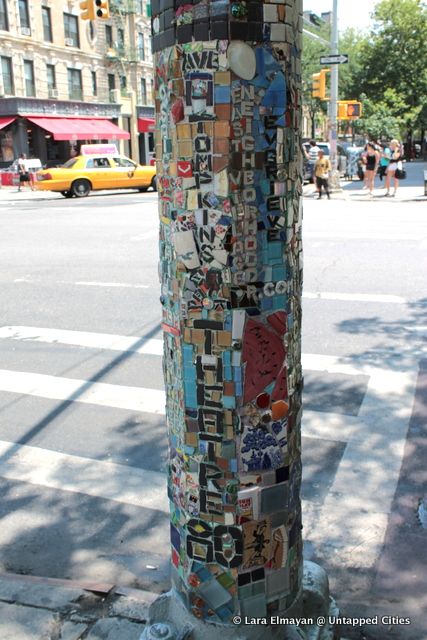
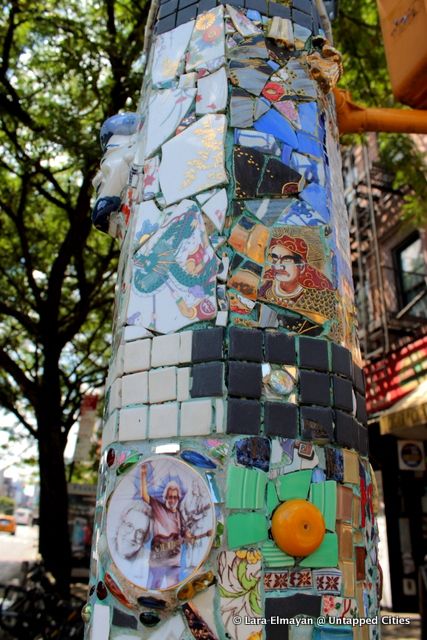
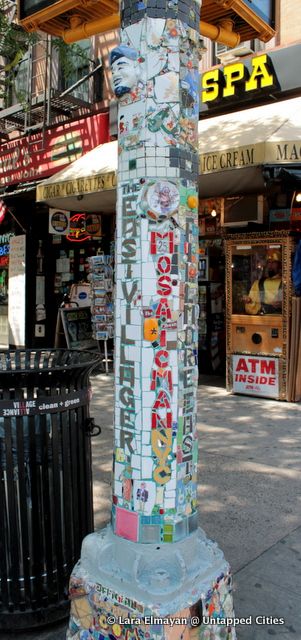



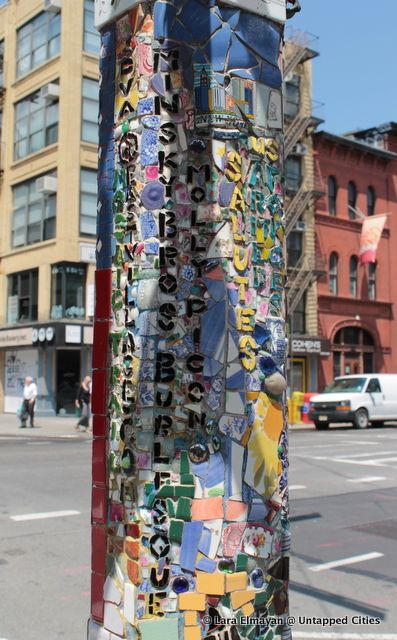
St. Marks and 1st Avenue:

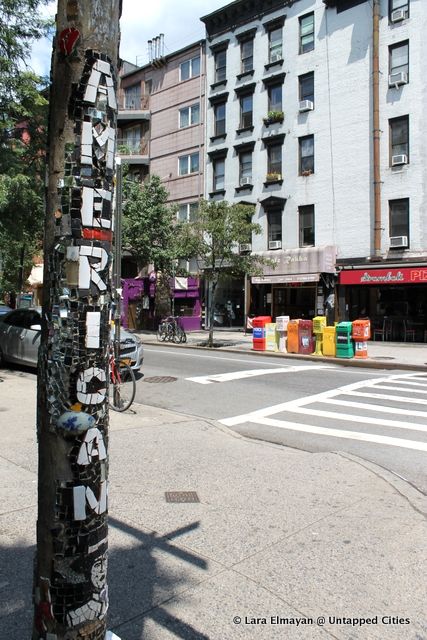
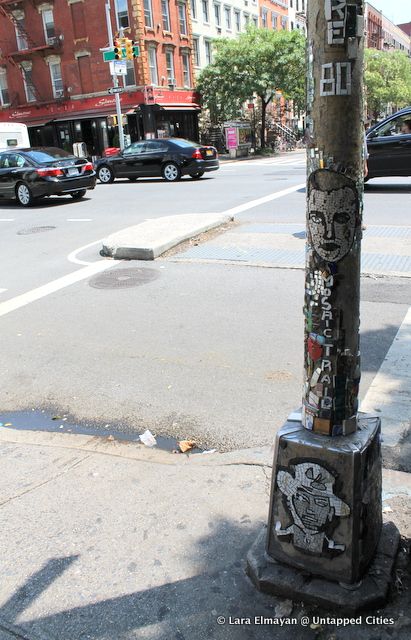

St. Marks and Avenue A:
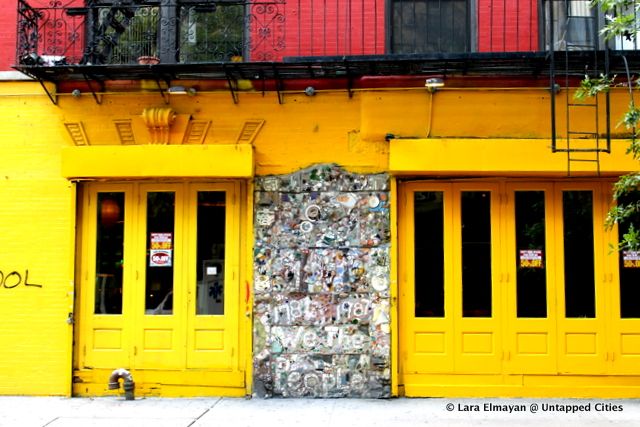
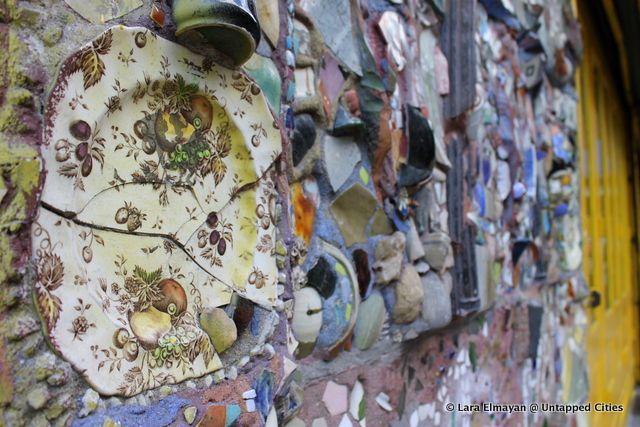
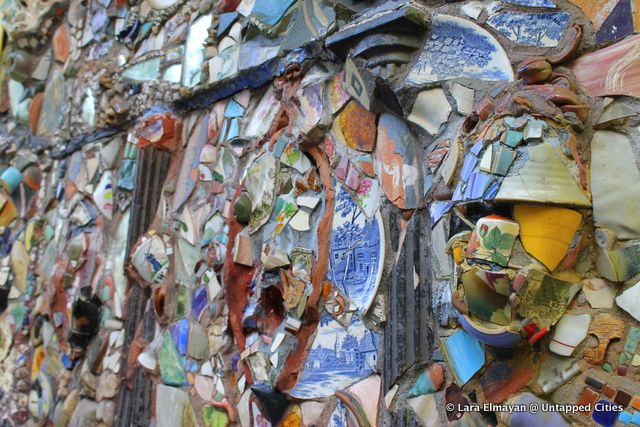
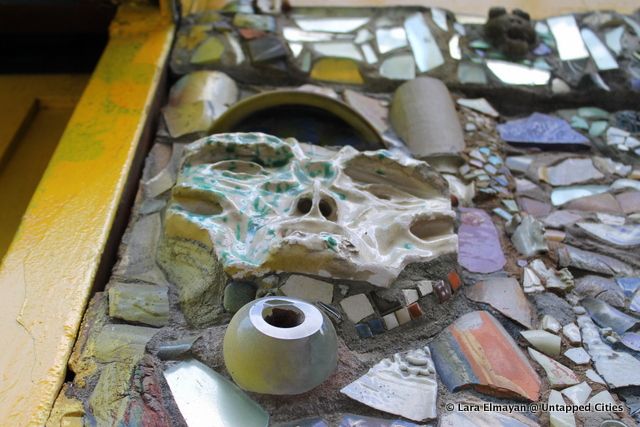
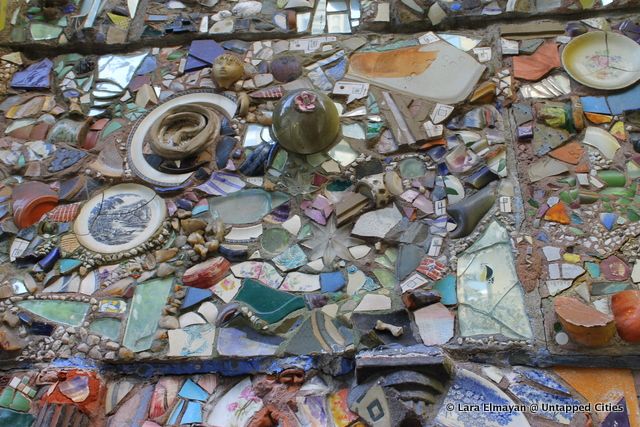

Tompkins Square Park:
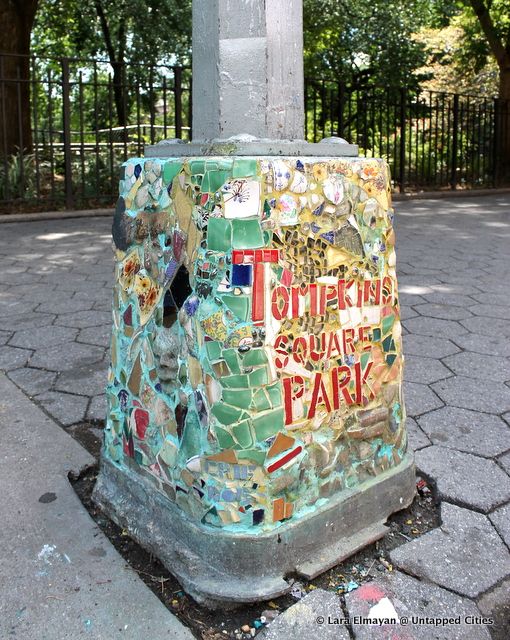
In front of the Please Don’t Tell Speakeasy on St. Marks between 1st and Avenue A:
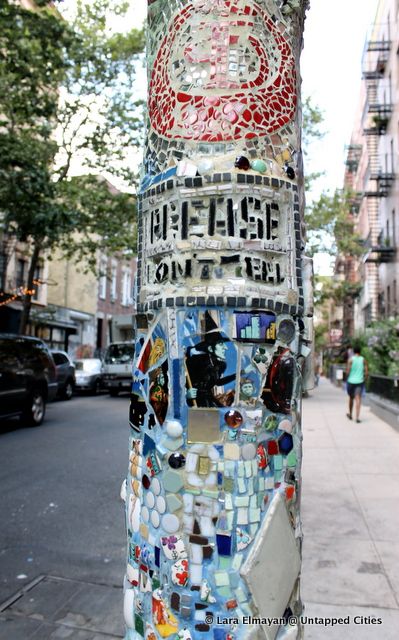
Trace the Patti Smith trail through the East Village and Chelsea and read more about mafia history on St. Mark’s Place.
Subscribe to our newsletter